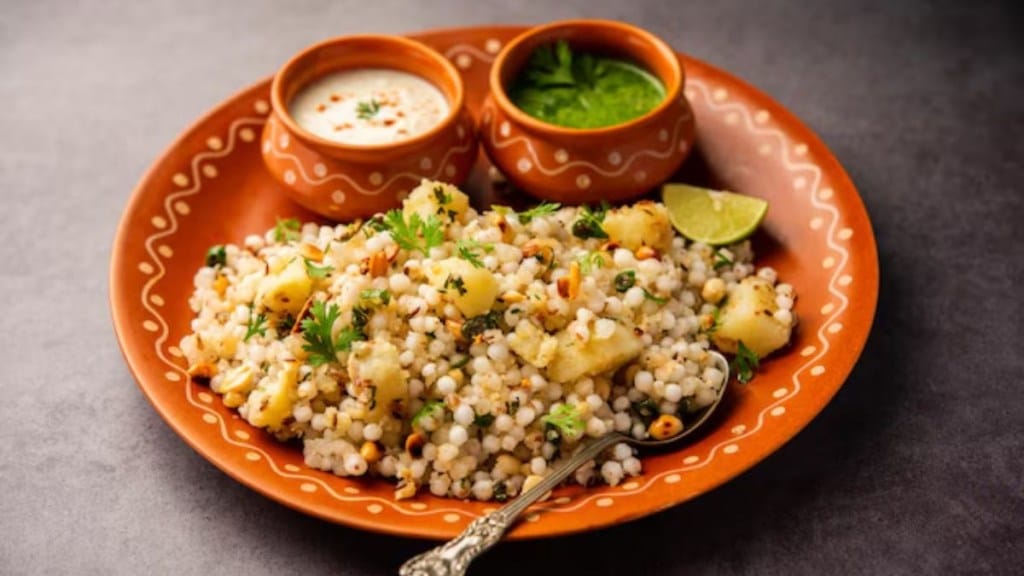The nine days of Navratri are filled with devotion, festivities, and celebrations. During this period, it is customary for devotees to observe fasts and eat only sattvic foods. Sabudana, or sago pearls, is one of the most common foods eaten during Navratri. Sabudana can help boost energy levels and keep you full for long, but is it really healthy?
Eating only sabudana dishes like khichdi, vada, or kheer is not the best choice for people observing fasts. Being high in carbs, and low in protein and fibre, relishing sabudana delicacies can cause sudden spikes in blood sugar. This may also leave you feeling hungry again soon, which can increase the overall calorie intake.
So, to make your Navratri vrat diet more nutritious, The Financial Express got in touch with Pratiksha Kadam, Chief Dietitian Kokilaben Dhirubhai Ambani Hospital, Navi Mumbai who shared healthy alternatives to include in your diet instead of sabudana.
Samak Rice (Barnyard Millet)
Samak rice is a fibre-rich, gluten-free grain that can be added in your vrat diet instead of rice or sabudana. It keeps you full for longer, stabilises blood sugar levels, and is good for gut health as it helps with digestion. Kadam explains, “Samak rice releases energy slowly, making it perfect for long fasting hours and keeping energy levels stable throughout the day.”
Rajgira (Amaranth)
Rajgira is rich in protein, calcium, and iron, which is essential during fasting as it helps in maintaining strength during fasting. You can use rajgira to make porridge, rotis, or laddoos. “Rajgira provides nutrients that help sustain energy and support muscles during fasting,” says Kadam. Mixing rajgira flour with yogurt or milk can make a quick, nutritious snack to beat mid-day fatigue.
Kuttu (Buckwheat)
Kuttu or buckwheat is rich in nutrients, high in protein and fibre. You can make rotis, dosas, or pakoras with it. Kadam explains, “Buckwheat is filling, helps maintain energy levels and good for gut health. What makes it a must add to your vrat diet it that it doesn’t make you feel heavy like sabudana does.” To make it more nutritious and filling you can add grated vegetables too.
Singhara (Water chestnut flour)
Singhara flour is naturally gluten-free, cooling, and rich in antioxidants. It can be used to prepare rotis, halwa, or cheelas. Kadam shares, “Singhara also keep you hydrated apart from being nutritious which is important during long fasting days.” Having it with milk or ghee can make for a wholesome, energy-boosting meal.
Sweet potatoes
Sweet potatoes are full of fibre, vitamins, and minerals, providing slow-releasing energy. They can be roasted, boiled, or turned into halwa. Kadam says, “They are filling, help maintain blood sugar, and are perfect for sustained energy during fasting hours.”
Makhana (Fox nuts)
Makhana is low in calories but high in protein and antioxidants. It can be roasted for a light snack or used in kheer. “Makhana keeps cravings at bay and supports heart health,” adds Kadam. Sprinkling a little cinnamon or ghee can enhance flavor and nutritional benefits.
Lauki (Bottle Gourd) and pumpkin
Lauki is hydrating and helps with digestion making it perfect for soups, curries, or halwa. Kadam explains, “Both vegetables provide essential nutrients, keep the stomach cool, and offer sustained energy during fasting.”
Aloo (Potato)
Kadam advises, “Potatoes are great for quick energy, but portion control is important to avoid blood sugar spikes.” Though starchy, potatoes provide instant energy when eaten in moderation. Cooking them with high-protein foods balances energy release.
Fruits and nuts
Fruits like bananas, apples, and papayas, with nuts such as almonds and walnuts, are natural energy boosters. They have fibre, healthy fats, vitamins, and minerals which supports overall health during fasting. Kadam adds, “Including fruits and nuts in your vrat meals helps maintain satiety and overall vitality throughout Navratri.”
Replacing sabudana with these alternatives not only make your meals nutritious but also gives energy, makes digestion better, and improves nutrition.

